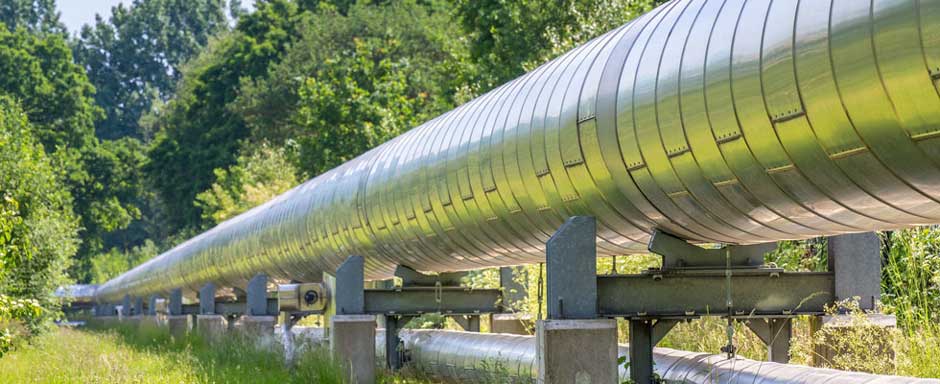
The past two years have thrown many a curveball at the propane industry. Whether it’s the COVID-19 pandemic causing upheaval in almost all aspects of life and business or the Russia-Ukraine crisis and subsequent sanctions creating pricing and supply volatility in the market, the industry has weathered many events that have affected both processes and planning. If there’s one major takeaway from the crises over the past two years, it’s that the industry must form new ideas and strategies from the lessons learned.
DD Alexander, president and owner of Global Gas, has been active in the industry since 1981 and is currently the chair of the Supply and Logistics Committee for the National Propane Gas Association (NPGA), as well as chair for the Suppliers Section. With her intimate knowledge of the intricacies of the supply chain, BPN sought Alexander’s insight on the lessons Global Gas has learned and how her team is using those lessons to forge a path ahead and to mitigate the effects of global and domestic events on supply.
How did supply chain issues affect Global Gas & the industry in the 2021-22 busy season?
The propane industry is incredible at adapting to everything thrown its way. The pandemic was no exception. Retail marketers and propane suppliers kept propane flowing to users of all types, including setting up temporary heat for COVID-19 testing and other uses. Having said that, we have definitely felt it in all aspects of the industry. Propane producers watched the price of liquefied petroleum gas (LPG) crater. We even saw smaller producers forced into bankruptcy. Tank and equipment sectors were also severely affected.
We are still seeing the supply chain in turbulence after the pandemic. Equipment and tanks are still in tight supply. For producers, while prices have rebounded and increased, production has been limited due to pipe supply, labor and sand for fracking.
You can’t turn on the tap once it has been turned off, even though some politicians believe differently.
How did Global Gas combat supply chain issues during the past winter?
Global Gas was well positioned with our supply. We contract all our needs and then some so we always have gas for our customers. Most of our customers needed extra gallons during the pandemic due to so many people staying home and heating their houses throughout the day.
Also, our retail customers saw people putting in all kinds of propane applications in their backyards and businesses to expand their space outside. This should benefit the industry for years to come.
What effect did the Russia-Ukraine crisis & oil & gas sanctions have on propane availability & pricing?
Early on, the Russia-Ukraine crisis and sanctions meant larger price volatility. The price increase is difficult for our customers (retailers) to pass on to their customers. We will see if they are able to collect their receivables. With high inflation for everything, including food and fuel, there is a lot of pressure on consumers, and propane is no different.
Regarding suppliers, we are beginning to see propane left in the U.S. in exchange for butane. Currently, the arb is double for butane versus propane. Therefore we witnessed large inventory builds through the month of May.
Energy Information Administration (EIA) data shows propane inventories increased by 2.9 MMbbls in the week ending July 8, which was above the estimate of +1.5 MMbbls. Over the previous four weeks, propane inventories changed at an average rate of +1.5 MMbbls/week, which is below the five-year average of +2.1 MMbbls/week. Propane exports picked up in June, hence, our inventory builds were smaller than normal.
What successful strategies did Global Gas employ after the crisis?
Basically, it was doing what we always do. In the first quarter, we were trying to get our supply lined up for the upcoming winter. It took longer than usual for our suppliers to come up with differentials, but eventually they did, and we were able to contract all our propane needs for the coming year.
Were there any other issues of note that affected supply?
The biggest one is what I noted previously. Traders are requesting butane be put on the ships, cannibalizing propane shipments. This has caused U.S. inventory to jump significantly. We have seen Mont Belvieu, Texas, propane go from a high of 82% of the value of crude in October 2021 to 62% at the start of the Ukraine crisis, to 50% [as of May 2022].
What lessons should the industry learn from the domestic & global events that affected supply this busy season?
The most significant lesson is that we are truly a global market. Our propane, equipment, pipe, trucks, etc., are all intertwined in a global market that is very unpredictable. I believe marketers are changing the way they buy everything. They are ordering equipment, tanks, trucks, etc., at least two years in advance of when they believe they will need them.
I also believe that post-pandemic, they will begin to hold larger inventories when able. Just-in-time inventory is a thing of the past.
What strategies would be beneficial for marketers to employ in the upcoming busy season based on those lessons learned?
Again, plan ahead. Order new tanks if needed, refurbish tanks if available, maintain your current vehicles so they will last longer — those types of things. Contract your propane supply needs for the upcoming 2022-23 year.
How can marketers make the most of their time in the summer months?
Maintaining equipment is extremely important to get it to last longer. Look around your plant and see if you have tanks that you are not using. Sell them to refurbishing companies. Refurbish tanks you have on hand if needed.
Hire the employees you need; don’t wait until October and hope to find drivers. We must be better prepared than ever before to operate in this market. With low supply of tanks, equipment and labor, we all need to be proactive and not reactive.
What are the most important supply concerns & efforts in the fall season that marketers cannot overlook as winter approaches?
I sound like a broken record, but contract your propane needs. Make sure your supplier has diversified supply points or diversify with different suppliers. Always go into winter with your customers’ tanks full and with your tanks full.
Give your supplier(s) and your trucking company a schedule by month of the loads you will be needing and where they will be coming from. If you can, preschedule your loads at the beginning of each month. Be first on your suppliers’ books and the transportation company’s book! During crunch time, it is easier to modify the schedule than it is to try and get a load at the last minute.
Are there particular data analysis offerings that would help marketers forecast customer demand for winter 2022-23?
As a supplier, I always look at my customers’ last three years’ liftings to get a good idea of where they need to be. If they are having significant growth, you can then plan for that — or the other way around (hopefully not).
The propane industry has many good computer applications that use degree days to route trucks, etc. The information is only as good as what is entered for usage and tank size, but it can be very helpful in gauging buying and deliveries. The EIA always puts out their estimated winter usage, along with weather forecasts. This can be useful but not foolproof, to say the least. The NPGA Supply and Logistics Committee offered several webinars this past summer. We plan to hold them again this summer. They were very well attended and received in our first year. Many industry participants found them valuable and worth their time.
What can marketers do to prepare for price spikes associated with unanticipated global/domestic events in the coming year?
Hedge! My favorite saying is, “Buy what you sell, sell what you buy.” For most propane retailers, that means selling prebuys to their customers and covering them. If you want to protect customers’ prices but they do not want to lock in a price, you can always do options.
How have your experiences supplying propane over your career driven the way your company strategizes for volatility in the market in 2022 & beyond?
My second favorite saying is, “No year is like last year.” But industry participants tend to only remember last year. I think my 40-plus years in the industry as a propane supplier have taught me that every year is indeed different.
We as a company always hedge our deals and contract for all our needs. I believe this is a good business model for any retailer in the propane industry as well. Global Gas has a very diversified supply portfolio so that we can adapt to any unforeseen supply issues. We believe in being very loyal to our suppliers and transportation company so they will be loyal to us.


